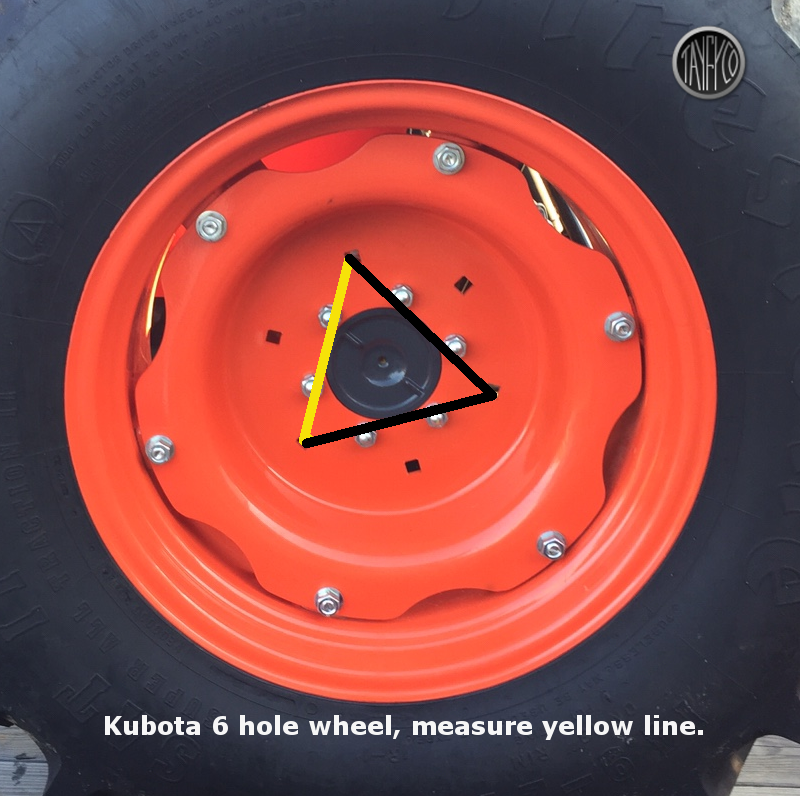Wheel Weight Mounting Patterns
Hole Patterns
The weight mounting pattern of your wheel along with its overall size is critical to determining the correct fit for your model. Most wheel weight patterns are determined by the number of mounting holes and the chord length.
Chord length is simply the straight line distance between two points on a curve. In this case, the straight line distance between the center of one mounting hole to the center of the next mounting hole. For example; a 4 hole pattern with 11 1/2 inches between mounting holes would be listed as 4@11 1/2"
To determine which tractor wheel weight will fit your model, you need to carefully check the mounting hole pattern in your wheel. These are NOT the holes where the wheel mounts to the hub of your tractor.
We can usually determine the proper weight for your tractor with the Brand and Model number of your machine. We can also match weights if you know the OEM part number for the weight you are looking to purchase.
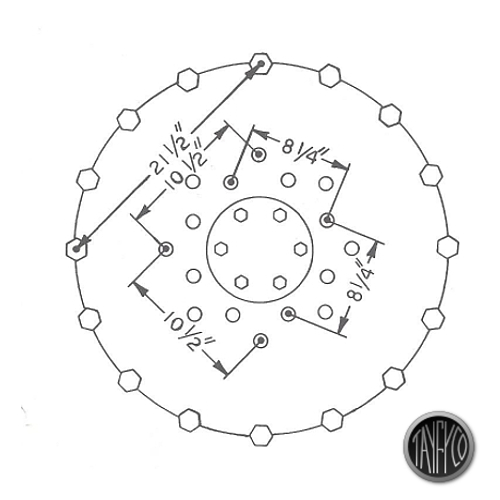
Verify Your Pattern
In order to determine and verify your mounting hole pattern, please see the guide below. These measurement examples are applicable to all brands of tractors. Some tractors have two different sets of mounting holes in the wheels. These multiple patterns allow for mounting different sizes of wheel weights to provide the best fit and overall traction for the intended application. Multiple mounting patterns in a wheel or most often seen with larger utility tractors and many mid size tractors.
Tractor wheel weights are almost always mounted with a three hole or four hole pattern. Six hole wheel patterns usually use only three holes to mount the weights. Four hole wheel patterns usually use all four holes to mount the weight.
NOTE: Many rims use square holes to mount weights. Square holes usually require carriage bolts as an aid to installation. Four or six square holes are common on many utility tractors. This does not mean the correct weight will also have square holes.
Proper Ballasting
This guide provides information to assist in determining proper fit. It does NOT provide information about how much weight you need to install for your particular application. Please contact us for more information about proper ballasting.
Measurement Guides
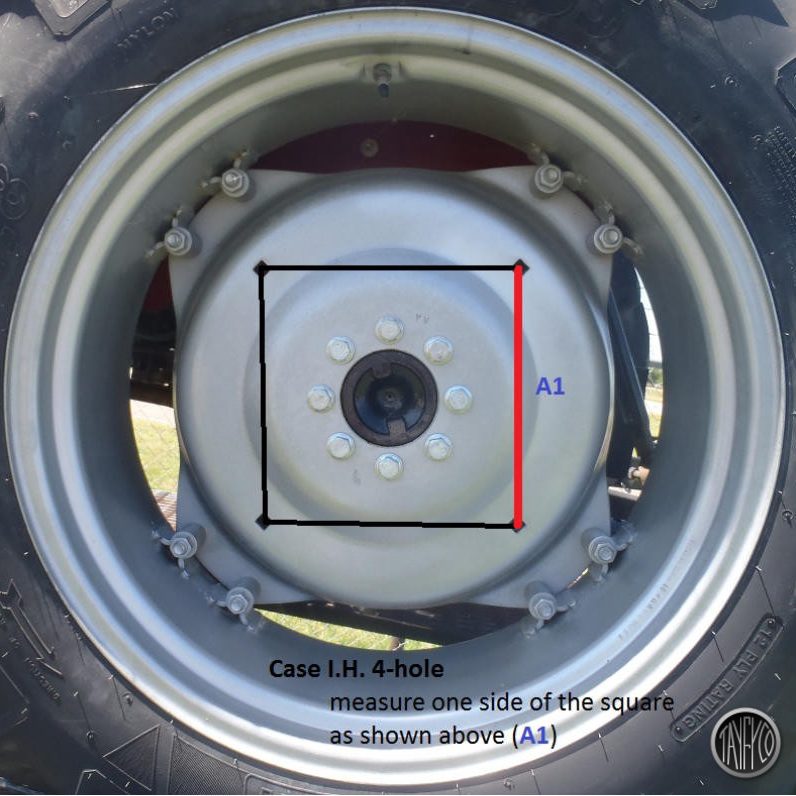
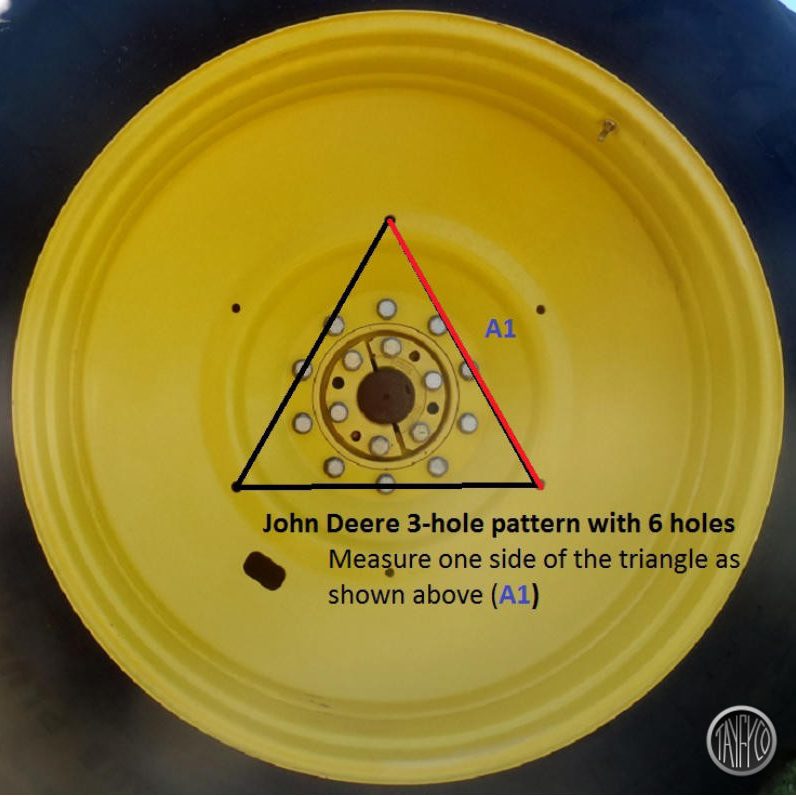
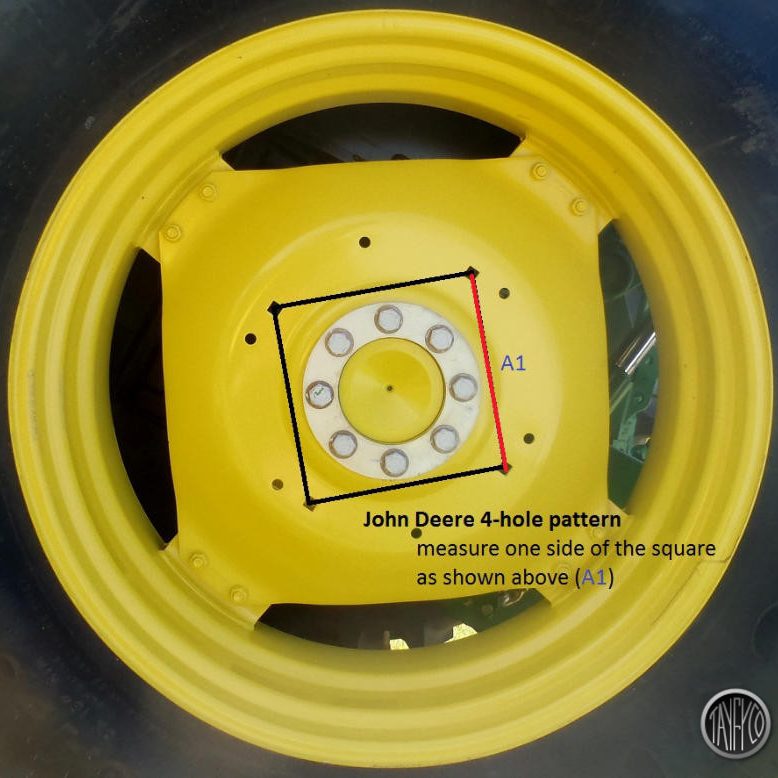
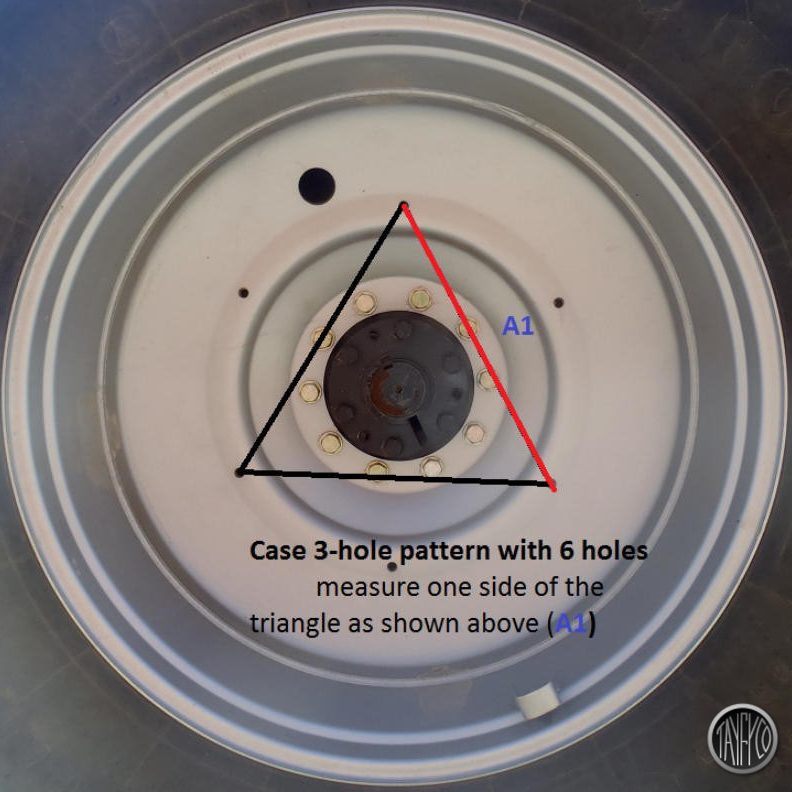
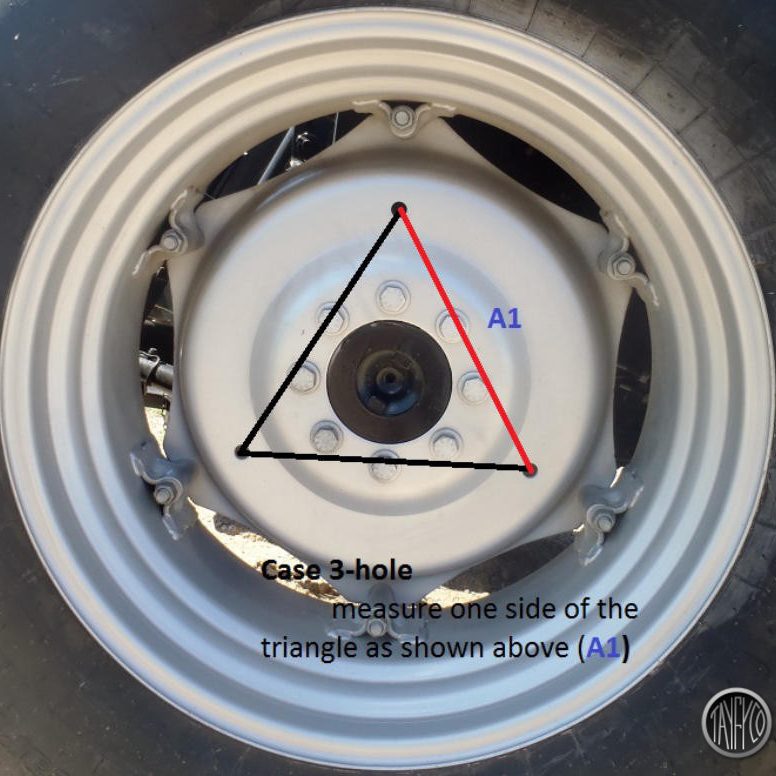
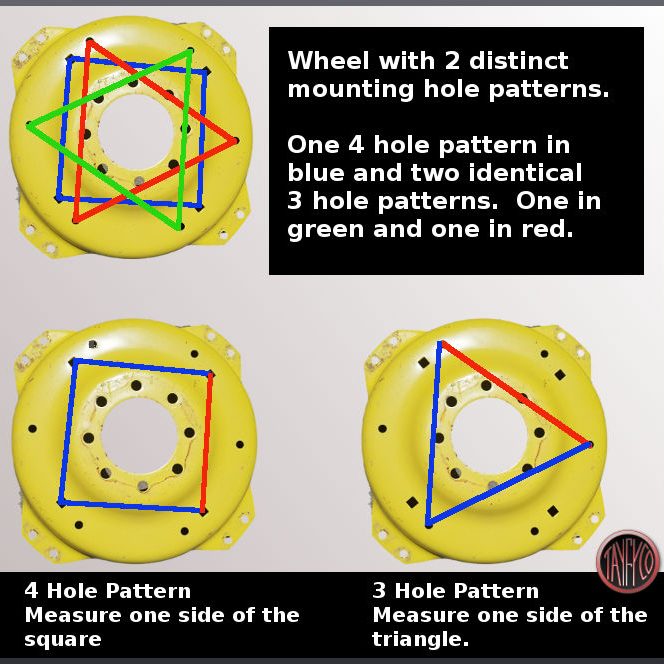
Contact Us for More Information or Assistance.

